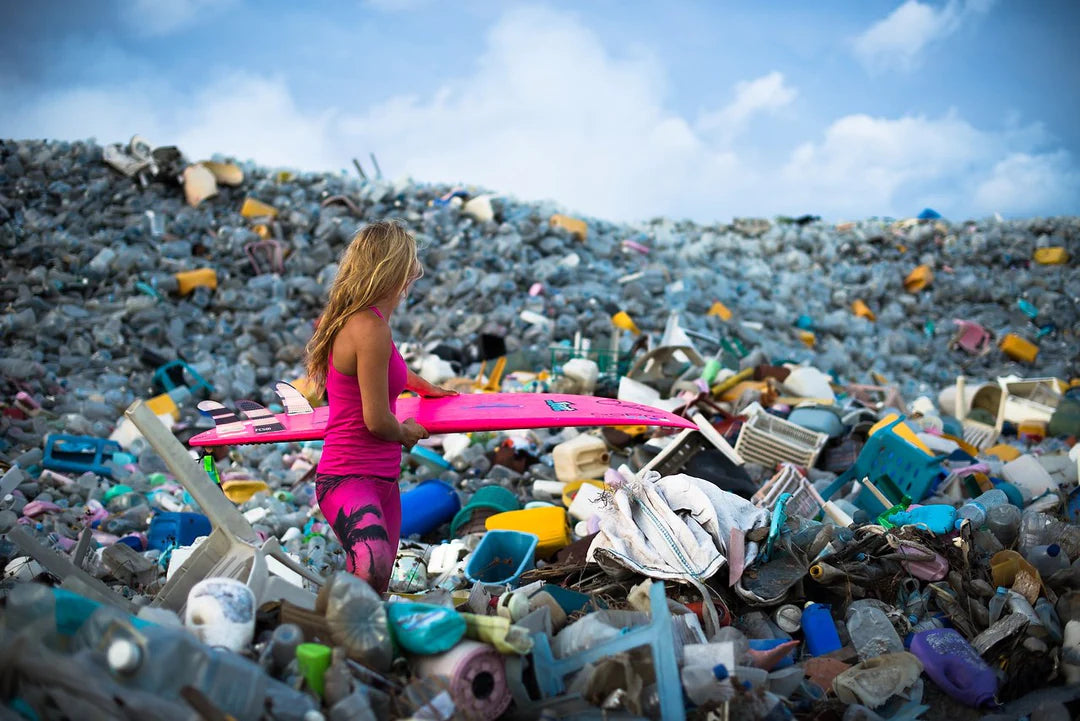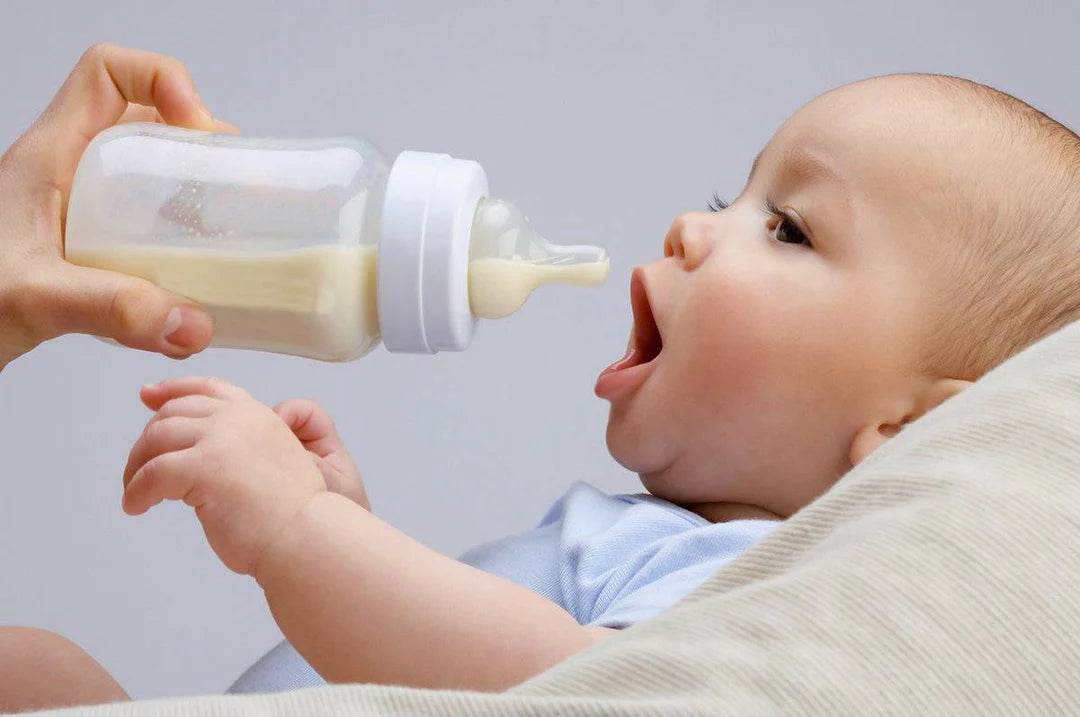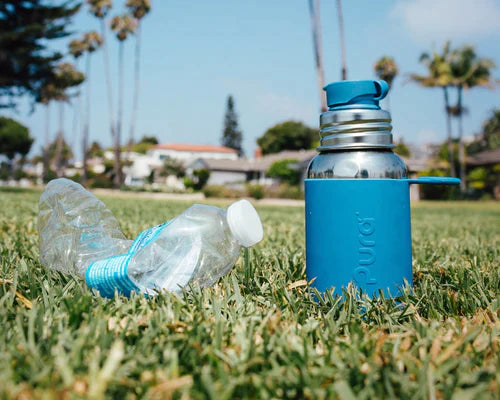Today, one can still often find misunderstanding and depreciation of the problem of the constant use of plastic items in our everyday life.
Plastic has become so ingrained in our lives over the past 50 years that many refuse to believe in the danger of plastic to health, because we will not see the consequences of daily poisoning of the body with toxic chemicals in a day or two and appreciate the entire cumulative effect of the constant use of goods from this inexpensive petrochemical product, only scientists can do long-term expensive research.
However, the rising charts for chronic and incurable diseases (including those for children under 14) should bring this acute problem to our attention. Especially this issue cannot be ignored by parents whose children are exposed to the potential risks of plastic toxins from a very young age.
In this article, we will talk about the impact of plastic on human health without mentioning the huge environmental problem associated with plastic pollution of our planet.

PLASTIC IS EVERYWHERE
It is in tableware, wrapping plastic, bottles, containers used to store food and drinks. But in recent years, more and more people have been asking if plastic is really safe when it comes into contact with our food (and therefore us)?
Research by scientists around the world shows that certain chemicals in plastic can leak out of the plastic and into the food and drinks we eat. Some of these chemicals have been linked to health problems such as metabolic disorders (including obesity) and reduced fertility.
Among the more troubling chemicals are PHTHALATES and BISPHENOL A (BPA). Both affect the human endocrine system, disrupting the proper functioning of human hormones.
WHAT IS PHTHALATES DANGEROUS?
Phthalates are a group of chemicals used to soften and make plastics more flexible, which can cause damage to the liver, kidneys, lungs, and reproductive system. Recent studies in human populations confirm some of the negative effects of phthalates on the development of the male reproductive system (first identified in many experimental animal studies). The systematic review also found that higher exposure to phthalates is associated with abnormal sperm and lower testosterone levels.
Recent studies also show that prenatal exposure to phthalates is associated with adverse neurodevelopmental effects, including lower IQ and problems with attention and hyperactivity, and poorer social communication.

Most often, people are exposed to phthalates from the following sources:
- Cosmetics and personal care products
- Plastic containers and bottles
- Food packaging and wrapping
- Plastic toys
- Wallpaper
- Vinyl flooring
- Raincoats
- Adhesives
- Household chemicals
- Plastic straws
- Medical equipment and devices
- PVC plastics
Young children are especially at risk because more and more researchers are finding phthalates in everything from baby products to toys, and often even those that say “phthalates free.”
By the way, until 1999, the use of phthalates in the production of pacifiers, soft rattles and teethers was allowed.

WHAT IS BISPHENOL-A?
By its structure, Bisphenol A is identical to the female hormone estrogen and is actually its synthetic analogue.
It has been used as an inexpensive hardener in the production and processing of plastics since the 1960s, and only in the last ten years, scientists have found that, in addition to the beneficial properties of Bisphenol A, it can:
- cause irreversible changes in the reproductive system
- negatively affect cells at the stage of division
- reduce sperm production in men
- influence the psychophysical behavior of offspring. In the future, this can lead to the appearance in the baby of manifestations of behavior that is different from its gender.
- may contribute to changes in placental function and lead to subsequent pregnancy complications
- causes early puberty in girls and suppresses it in boys
- contributes to the development of a number of cancers
- affects the change in the structure of DNA and contributes to the transmission of mutations by inheritance
- leads to obesity, type II diabetes, cardiovascular disease and liver problems
- It has a sharp depressing effect on the function of the thyroid gland, which plays an important role in our body.
WHERE IS IT CONTAINED?
Almost everywhere, but we will consider only the most common items in our everyday life that can be easily replaced. About 3.6 million tons of Bisphenol A are produced annually in the world.
The American industry has long insisted that BPA is safe in normal amounts, but this claim has been completely refuted by numerous independent studies by scientists around the world. In 2010, the US had to admit, despite the resistance of the WHO, ignoring more than 300 studies with very specific conclusions, which are described above, that there is no safe amount of bisphenol A: EVEN IN LOW DOSES IT IS DANGEROUS to health.
BABY BOTTLES, NIPPLES AND TOYS
Interesting story. As soon as scientists figured out all the harm from bisphenol, in 2010 in Europe, Canada, Israel and some US states, baby bottles and nipples containing a dangerous substance were banned. But, it had to be replaced with something, right? You can’t just remove it, depriving the plastic of its valuable properties.
So, already in 2018, when consumers boldly choose BPA free products, there is more and more data pointing to the unhealthy effects of a whole alphabet soup of BPA alternatives that replaced the original: bisphenol AF (BPAF), bisphenol Z (BPZ), bisphenol S (BPS), bisphenol F (BPF), bisphenol AP (BPAP), and bisphenol B (BPB).
Therefore, to protect your children from this chemical in food, from what it is replaced with and has not yet been studied – use pure steel or glass, toys made from natural materials.
Why put at risk and place your children on the testing line?
BOTTLES FOR WATER, BEVERAGES AND FOOD CONTAINERS
Bisphenol A is released when containers are heated, washed with detergents, and even with minor damage and scratches. So many countries continue to ban the use of this substance in long products range.
For example, in France, a ban on this substance in food packaging came into force on January 1, 2014, and Denmark banned all BPA-containing packaging for baby food, teethers, toys and utensils for children under three years of age. However, manufacturers continue to supply goods containing harmful chemicals to other countries. And this is important to understand.
PROTECTING YOURSELF is easy – just use natural materials in everything related to food – steel, glass, food grade silicone.
ALL CHECKS
Scientists from the University of California found a very high content of bisphenol A in cash receipts (hundreds of times higher than in the same plastic bottles).
When a person holds a check in their hands, BPA gets on the skin and can be absorbed into it, or risk being ingested along with food that we held with contaminated hands. In the cash register, the paper is heated pointwise in those places where there should be black lines, letters, numbers, and they appear. It is when the thermal paper is heated that the substance is released.
Try not to pick up checks, and if you have to, then briefly and be sure to wash your hands thoroughly afterwards.
INSIDE LAYER OF CANS
Bisphenol A is also used in the production of cans, as this substance protects them from corrosion and helps keep food “fresh” longer. In 2015, during the study of 204 food products for the content of the hazardous substance bisphenol-A, its presence was found in 73% of the studied canned food.
According to research by the Harvard School of Public Health, the contents of one such jar are enough to increase the amount of BPA in the body by 20 times.
Minimize or completely eliminate food in metal cans. An alternative is canned food in glass.
…Sports equipment, medical instruments, dental fillings and sealants, eyeglass lenses, CDs, automotive parts, adhesives, resins and paints, antiseptics in medicine and veterinary medicine…
Unfortunately, getting rid of it completely is almost impossible. Whether we like it or not, for the time being we live IN THE WORLD OF PLASTIC.
Bisphenol A in adults is excreted from the body within a few hours. But, since this substance is virtually everywhere (from plastic bottles to ink on cash receipts), we will always have traces of this substance in the body as a result of continuous exposure.
Since the early 1990s, its concentration in the human body has increased by almost 3 times!
The sheer amount of plastic waste ending up in the environment means that BPA is leaching into rivers and soil and eventually back into our bodies.
- exposed to heat
- has a destroyed structure (scratches, scuffs and chips)
This means that you can get even more toxic substances into your products by heating something directly in plastic or, for example, in plastic utensils that we have rubbed well with a hard sponge more than once.
Immediately you need to remember baby plastic bottles heated with mixtures, warming up lunches in plastic containers, about food in disposable plastic dishes at food courts, water in a plastic bottle heated in the sun, and so on.
SAY NO TO PLASTIC EVERYWHERE YOU CAN!
Do not experiment on your health and the health of your children.

IF THESE 2 COMPONENTS ARE EXCLUDED, IS PLASTIC BECOMING LESS DANGEROUS FOR US?
Logically, if a manufacturer removes phthalates from their plastic recipe, they still need something to soften the plastic, so they replace the phthalates with another softening chemical.
The problem is that often a new chemical is not found to be safer. Initially, companies seeking to avoid the use of BPA in products switched to another chemical called bisphenol S, or BPS, which little was known about at the time. But recent studies show that this chemical is no less harmful than its predecessor, and sometimes even more active.
That is why absolutely ANY PLASTIC, especially the one that we use on an ongoing basis, bears UNREPRESENTED RISKS for us.
There are things when we objectively cannot do without plastic, for example, during medical procedures, but tea bags, disposable glasses, water from plastic bottles, plastic containers for food, toys of dubious origin, children’s plastic utensils and plastic bottles for feeding – these RISKS TO AVOID elementary.
The impact on children, including those who have not yet been born, causes scientists a really strong concern. The first part of the article describes the PROVEN RISKS. And how much is still unexplored. Manufacturers cannot do research, for example, on how a particular substance affects brain development. Especially before the release of goods on the market.
Well, then, who cares.
No one will give a definite answer. Will these risks happen to any of us? Are we going to associate our gynecological problems with disposable plastic pads or coffee from disposable cups?
Then it won’t make any sense. That’s why it’s always BETTER to make a mistake on the side of caution in the plastic story.
TO SUM UP, HERE ARE 3 SIMPLE PRACTICES TO MINIMIZE RISKS:
- Don’t buy or store food in plastic whenever possible.
- Never heat plastic.
- If you use plastic, then know all its markings and the nuances in using each type.
Take care of yourself!

Sources used in the article:
- PubMed “A Review of Human Exposure to Microplastics and Insights Into Microplastics as Obesogens“
- PubMed “Detection of various microplastics in placentas, meconium, infant feces, breastmilk and infant formula“
- PubMed “Associations of Plastic Bottle Exposure with Infant Fecal Microbiota, Short-Chain Fatty Acids, and Growth”
- ScienceDirect “Environmental exposure to microplastics: An overview on possible human health effects”
- NCBI “Plasticenta: First evidence of microplastics in human placenta”
- NCBI “The potential effects of microplastics on human health: What is known and what is unknown”
- NCBI “Bisphenol A leaching from polycarbonate baby bottles into baby food causes potential health issues”
- PubMed “Health Risk Assessment of Exposure to Bisphenol A in Polymeric Baby Bottles”
- The Guardian “Phthalates are everywhere, and the health risks are worring. How bad are they really?”
- СDС.gov “Phthalates factsheet”
- NCBI “Phthalates and other additives in plastics:human exposure and associated health outcomes”
- ScienceDirect “Phthalate exposure and metabolic effects: a systematic review of the human epidemiological evidence”
- WebMD “What are phthalates?”
- NCBI “The Politics of Plastics: The Making and Unmaking of Bisphenol A “Safety”



